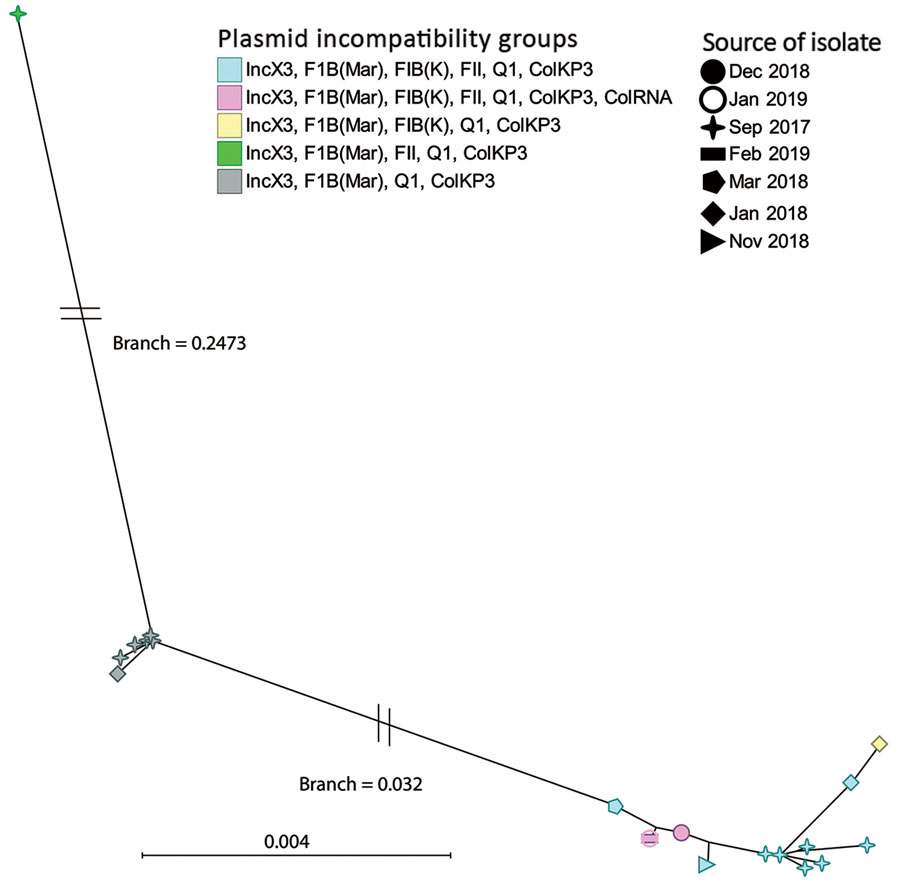Volume 26, Number 9—September 2020
Dispatch
Oxacillinase-181 Carbapenemase-Producing Klebsiella pneumoniae in Neonatal Intensive Care Unit, Ghana, 2017–2019
Figure 2

Figure 2. Binary rational tree illustrating genetic diversity (presence–absence of genes) of the accessory genome of carbapenemase-producing Klebsiella pneumoniae isolates from the neonatal intensive care unit at Korle-Bu Teaching Hospital, Accra, Ghana, 2017–2019. Different shapes represent different dates of organism isolation. Blue and green shapes evolved from the gray; pink and yellow evolved from the blue. Scale bar indicates genetic differences per site.
Page created: June 30, 2020
Page updated: August 19, 2020
Page reviewed: August 19, 2020
The conclusions, findings, and opinions expressed by authors contributing to this journal do not necessarily reflect the official position of the U.S. Department of Health and Human Services, the Public Health Service, the Centers for Disease Control and Prevention, or the authors' affiliated institutions. Use of trade names is for identification only and does not imply endorsement by any of the groups named above.